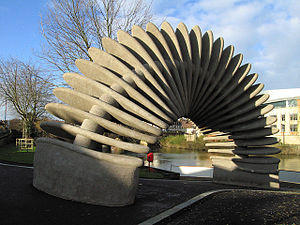 Let’s start with a simple premise in the world of health care – if you can’t understand the patient’s problem, then it makes it pretty hard to provide a patient with an effective solution. I think that all clinicians would agree with this premise.
Let’s start with a simple premise in the world of health care – if you can’t understand the patient’s problem, then it makes it pretty hard to provide a patient with an effective solution. I think that all clinicians would agree with this premise. Taking another step forward on this line of thought - in order to solve the problem, you need to be able to think, to reason, to “connect the dots” of your thinking, and to do so logically and based on good, sound data. I don’t think that’s much of a quantum leap in thinking either.
Sadly, this is not the clinical reality that patients experience – with physicians, with chiropractors, with massage therapists, with physical therapists, or with countless other clinicians.
That’s a strong statement that may require some explanation.
My clinical practice is in an orthopedic realm. It has been my clinical focus for the vast majority of my 22 years as a physiotherapist. Because of my accumulated experience and training, I do tend to see a lot of patients as a “last resort” or “problem solver”. In other words, “I have failed elsewhere, so now I am coming to see you”. And I can state without hesitation that the longer I work in this field, the more patients I see that have failed other therapies, treatments, and interventions.
Clinicians have historically been taught (and continue to promote, unfairly and incorrectly, I might add) the concept of “mal-alignment” as a diagnostic tool and as a primary causative factor in injury. A biomechanical mal-alignment could be as simple as one hip being visually higher than the other. It could be flat feet. It could be one leg being slightly longer than the other.
But “mal-alignment” is a difficult term with limited diagnostic utility. You have people with pristine alignment – and pain, and those that have horrible alignment – and are pain-free, and all points in between. And let’s face it – virtually everyone on the planet is asymmetrical.
For 30 years, the scientific literature has told us, repeatedly and consistently, that there is little to no cause-effect relationship between “biomechanical mal-alignment” and the onset (or increased incidence) of any specific injury. What that means is that if you see a person that has a mal-alignment, you can’t use it to reliably predict the onset of certain problems in the future . And if you see a patient with a mal-alignment, you can’t assume that is the cause of their problem.
Remember how I mentioned earlier that the clinical reasoning process requires both sound thinking and sound data? Well, we have a problem with both issues here: there is flawed thinking, and there is poor data. There are quantum leaps made in the thought process: an assumption that mal-alignment is causative in nature. There are quantum leaps made in the data collection: using unreliable, static data on the patient, without performing mechanical testing of the affected joints, doing repeated movement assessment, and finding the symptomatic and mechanical responses to loading – regardless of the static alignment.
But with this in mind, the bigger problem is that this paradigm has become an accepted standard of care. It has continued to be taught at the entry level of education for virtually all health care providers. And, quite frankly, it is based on an understanding of both clinical reasoning and biomechanics that is at least 30 years old now. It is the bane of our clinical existence and the bane of our clinical educational process as well. Simply making a clinical judgment based on a static alignment in space – regardless of what health care field you are in – is making a quantum leap down a diagnostic pathway that almost certainly has little to no relationship to the onset nor progression of signs and/or symptoms.
Sadly, I see exactly this phenomenon , the quantum leap that is disguised as clinical reasoning, on a daily basis. I hear the patient (and clinician) stories of the interminable treatments based on these “nasty” biomechanical mal-alignments. And I hear the patient stories of how they were told that with time and treatment, they might be able to solve their problem and get “re-aligned” - if they schedule enough visits, of course. What we now see are clinicians that are simply throwing treatments at the diagnostic wall, hoping that something will stick. That’s not clinical reasoning, that is gambling.
In an upcoming article, I’ll further that thought with a discussion of palpation and those treatments based around it. Be it manual therapy, soft tissue massage, active release therapy, or many other palpation-based interventions, if you build a house on a foundation of unreliability, then the second and third stories of the house are most definitely at risk.
Photo Credits: Wikipedia

 "Running Injuries: Etiology And Recovery- Based Treatment" (co-author Bridget Clark, PT) appears in the third edition and fourth editions of "Clinical Orthopaedic Rehabilitation: A Team Approach" by Charles Giangarra, MD and Robert C. Manske, PT.
"Running Injuries: Etiology And Recovery- Based Treatment" (co-author Bridget Clark, PT) appears in the third edition and fourth editions of "Clinical Orthopaedic Rehabilitation: A Team Approach" by Charles Giangarra, MD and Robert C. Manske, PT.
 Allan Besselink, PT, DPT, Ph.D., Dip.MDT has a unique voice in the world of sports, education, and health care. Read more about Allan here.
Allan Besselink, PT, DPT, Ph.D., Dip.MDT has a unique voice in the world of sports, education, and health care. Read more about Allan here.
 Top 5 finalist in three categories: "Best Overall Blog", "Best PT Blog" and "Best Advocacy Blog".
Top 5 finalist in three categories: "Best Overall Blog", "Best PT Blog" and "Best Advocacy Blog".